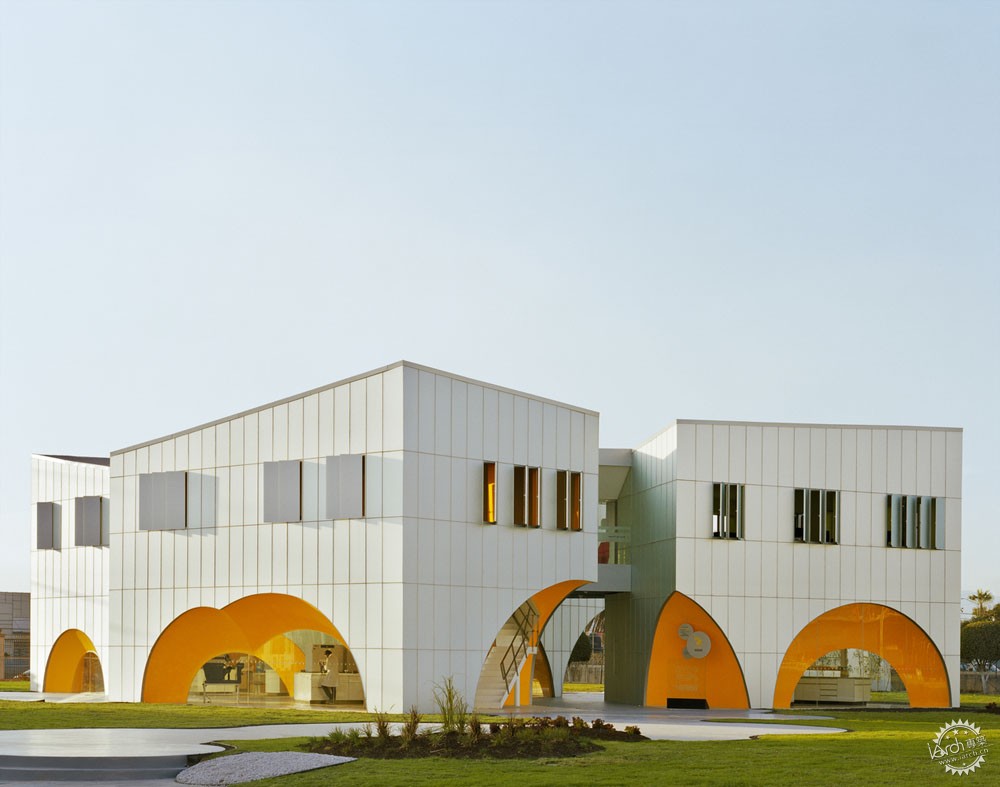
Nestle Application Group / Rojkind Arquitectos . Image © Paul Rivera
建筑是它能做什么,而不是看起来像什么
“Architecture Should be About What It Can Do, Not What it Can Look Like”: In Conversation with Michel Rojkind
由专筑网李韧,曹逸希编译
Michel Rojkind于1969年出生于墨西哥,上世纪90年代在伊比利亚美洲大学学习,同时还在Aleks Syntek的流行摇滚乐队la Gente Normal中担任鼓手。在2002年,他成立了自己的Rojkind Arquitectos事务所,其最具代表性的建筑作品有为韦拉克鲁斯Boca del Rio爱乐乐团设计的Foro Boca、墨西哥城全新的电影综合体Cineteca Nacional、雀巢公司的工厂扩建项目,以及雀巢巧克力博物馆,这些作品都在墨西哥。在沟通中,我们说到了其项目与人的关系,以及建筑师为什么应该承担建筑之外的角色,另外还有慷慨的重要作用等等,这些都不仅仅是设计。
以下是我和Rojkind所进行的一系列对话,当时我也正在筹备自己的展览,展览主题为“叙事之外的一些东西(Something Other than a Narrative)”,本次展览于墨西哥举办。
Born in 1969 in Mexico City, Michel Rojkind was educated in the 1990s at the Universidad Iberoamericana, while also performing as a drummer in Aleks Syntek’s popular rock band la Gente Normal. He opened his practice Rojkind Arquitectos in 2002. Among his most representative built works are Foro Boca for the Boca del Rio Philharmonic Orchestra in Veracruz, a newly expanded film complex Cineteca Nacional in Mexico City, a pair of factory additions for the Nestlé Company in Queretaro, and the Nestlé Chocolate Museum in Toluca, all in Mexico. We spoke about how his architecture engages with people, why architects should assume roles that extend beyond architecture, and the importance of generosity and not worrying about designing everything 100%.
The following excerpt from my interview with Rojkind completes a series of conversations that I conducted in Mexico City while preparing my exhibition “Something Other than a Narrative” from the Architects’ Voices and Visions series at Facultad de Arquitectura Universidad Nacional Autónoma de México, UNAM.
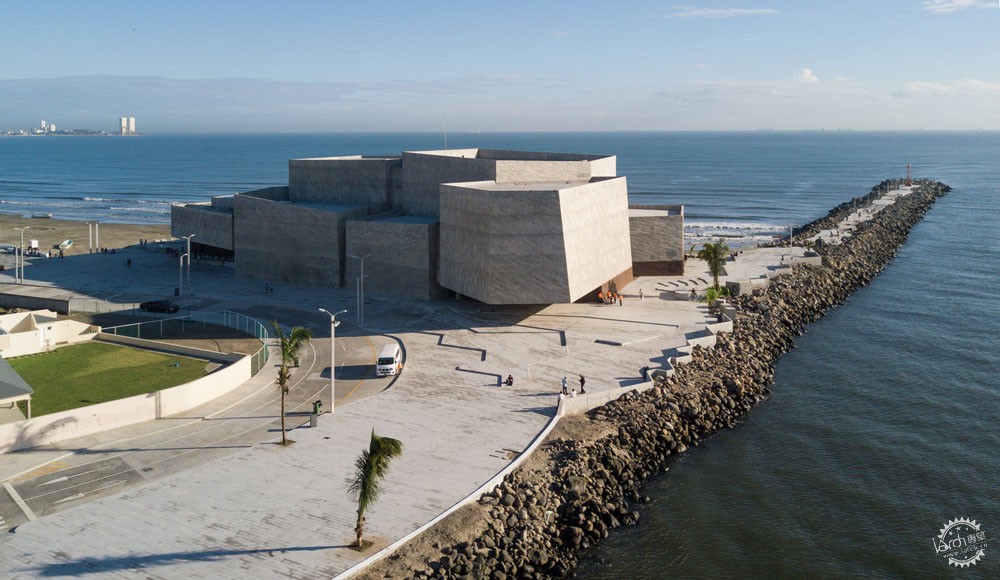
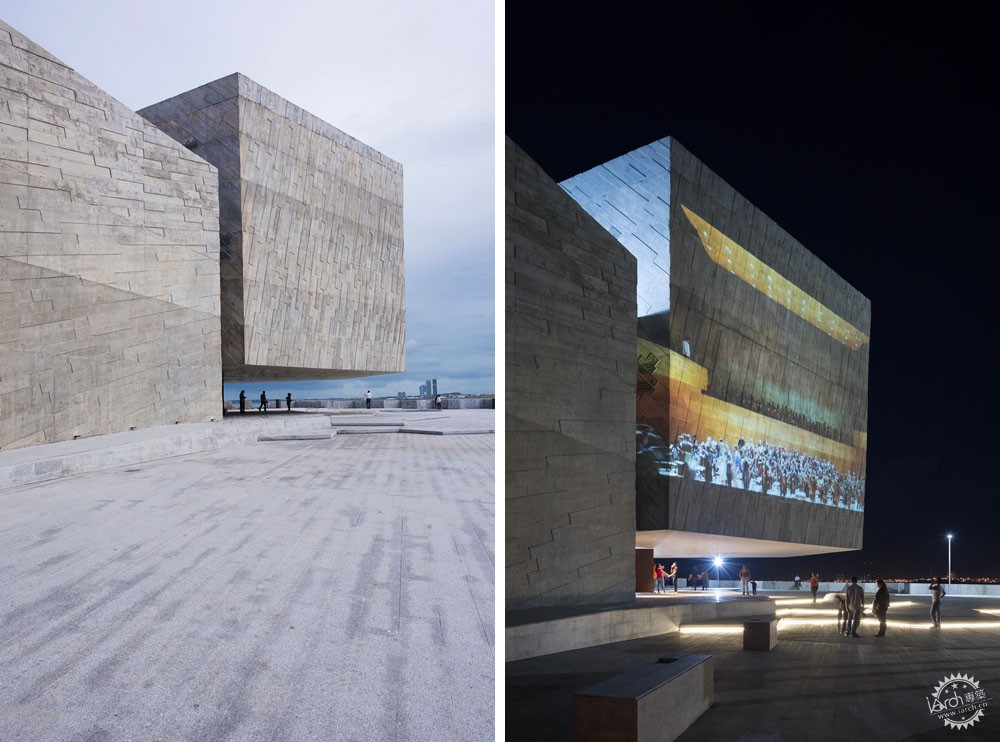
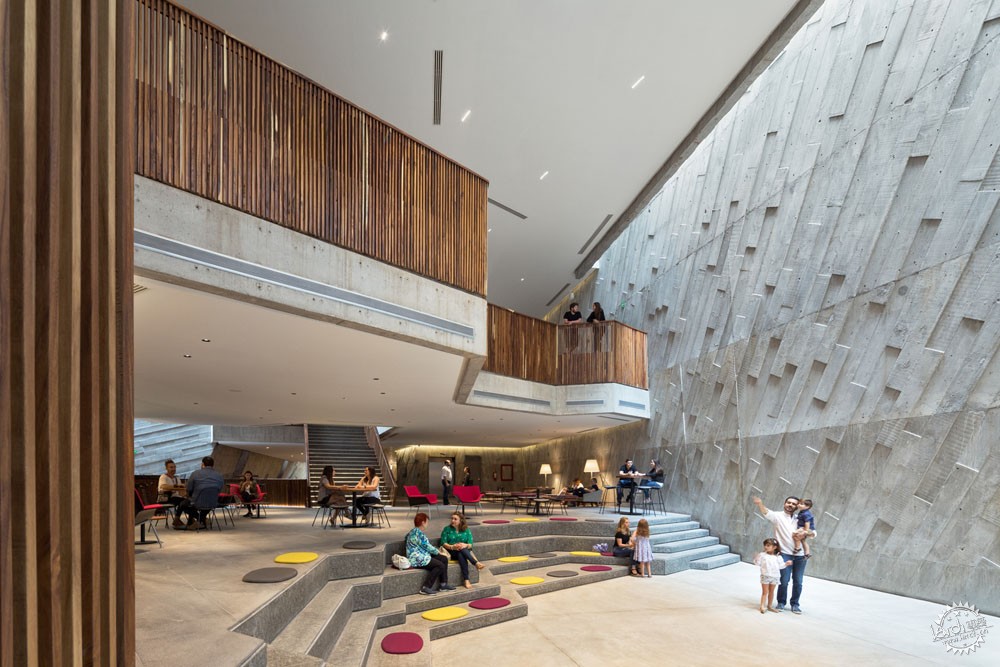

墨西哥Foro Boca音乐厅|Foro Boca / Rojkind Arquitectos . Image © Jaime Navarro
Vladimir Belogolovsky(下文称为VB):你能谈谈你的工作室如何运营吗?
Michel Rojkind(下文称为MR):我们更加关注设计策略。我们不只是简单地遵循客户的需求,我们会质疑他们的目的,然后进行建筑以外的建议。最让人兴奋的项目是Boca del Rio爱乐乐团音乐厅Foro Boca,该乐团成立于2014年,从没有设计过自己的建筑。这座全新的音乐厅位于滨海地区,毗邻城市的中心生活区。该项目令人振奋,不仅仅是因为能够为这个乐团提供表演场地,同时还包含了许多诸如剧场、排练厅、电影院、音乐图书馆等艺术功能。
我们还会和当地政府进行沟通,并且讨论整个区域的分区状况,因为新建筑会对整个地区造成影响。因此,这个项目逐渐成为了对整个城市产生巨大影响的总体规划,包括基础设施的改善、滨海地区的翻新、周边地区密度的调整等等。这个项目逐渐完成,我们的努力逐渐产生了效果。建筑自身并不能解决问题,换句话说,单靠建筑并没有多大作用。建筑只是硬件,城市还需要软件,那么该谁来设计呢?
“建筑只是硬件,城市还需要软件,那么该谁来设计呢?”
VB:作为建筑师的你,就是承担了这个责任,是吗?
MR:除此之外呢?建筑必须与人接触。
VB:怎么与人接触?
MR:是的,我们会让事情变得复杂一些。(笑)我们不只是建筑师,我们还会加上诸如社会学、人类学、金融学、景观学、图像学、工业设计等问题。举例来说,当我们在墨西哥构思Mercado Roma项目时,有人说,这看起来就是个现代的市场,这种类型遍布巴塞罗那或是纽约。他们说在墨西哥市场已经有很多,但是我们还是由内而外来进行这个项目,这并不是客户的要求,而是我们的工作习惯。
我们想的是,首先我们必须要了解关键的任务,然后再进行调查。我们知道我们想要做这样一个市场,因此我们要找到愿意在这工作的人,而不仅仅只是让空间好用。这种方式激发了我的许多灵感。我们常常被别人的想法所影响。我与越多的非建筑专业人群合作,那么我的想法就变得愈发多元。我希望建筑设计、工业设计、平面设计之间的界限能够消失。项目应该来源于好想法。重要的是,我们可以相互分享知识,促进彼此的成长。合作具有强大的能量。无论谁有了好想法,大家都能够共同学习。
Vladimir Belogolovsky: Could you talk about how your office operates?
Michel Rojkind: We focus on design strategies here. We don’t simply follow the clients’ briefs; we question their intentions and make many suggestions beyond architecture. Our most exciting project is Foro Boca, the new home of the Boca del Rio Philharmonic Orchestra in Veracruz. This institution was formed in 2014 and it never had its own building before. The new concert hall is situated on the coast, located right in the heart of cultural life of the city. The project is exciting because not only is there a concert hall for the orchestra, but it incorporates many different artistic programs such as a theater, rehearsal halls, cinema, and music library.
We also met with the local government and discussed rezoning of the whole immediate area, which will be influenced by the new building. So, our project grew into becoming a masterplan with a great impact on the entire city, which includes urban infrastructure improvements, coastal area refurbishments, and planning for increased density in the surrounding neighborhood. As the project is now built, we are also working on improving a much larger territory. We need to be mindful that architecture will not solve problems by itself. In other words, buildings alone will not solve anything. Architecture is just the hardware; there is still a need for software. Who is designing that?
“ Architecture is just the hardware; there is still a need for software. Who is designing that? ”
VB: You, as an architect, assume that role, right?
MR: Who else? Architecture must engage with people.
VB: How?
MR: Well, we make things more complicated. [Laughs.] We are not just architects here. We are bringing together such specialists as sociologists, anthropologists, financial advisers, as well as landscape, graphic, and industrial designers, and so on. Let me give you an example. When we worked on our Mercado Roma here in Mexico City, we were criticized for trying to do a contemporary version of a market, something that can be found in Barcelona or New York. We were told that here in Mexico markets already exist and they are what they are. But we started working on this project from inside out and not because the client asked me to, but because that’s how we work.
The idea is that we have to understand who the key players are or who might be missing and whom we need to go out and find. We knew we wanted to do a gastronomical market, so it was logical for us to approach chefs who would want to work there, and not just create spaces for rent. These collaborations stimulate our work. We like to be contaminated by other peoples’ ideas. The more I work with non-architects the more diverse and relevant my work becomes. I like when creative boundaries between architecture, industrial design, graphic design, and so many other disciplines dissolve. A project should be driven by the best ideas possible. Most importantly, if we share our knowledge, we will learn from each other and spark a greater growth. There is power in collaboration. Whenever I or any of the people who we collaborate with come up with a good idea, we immediately share that.

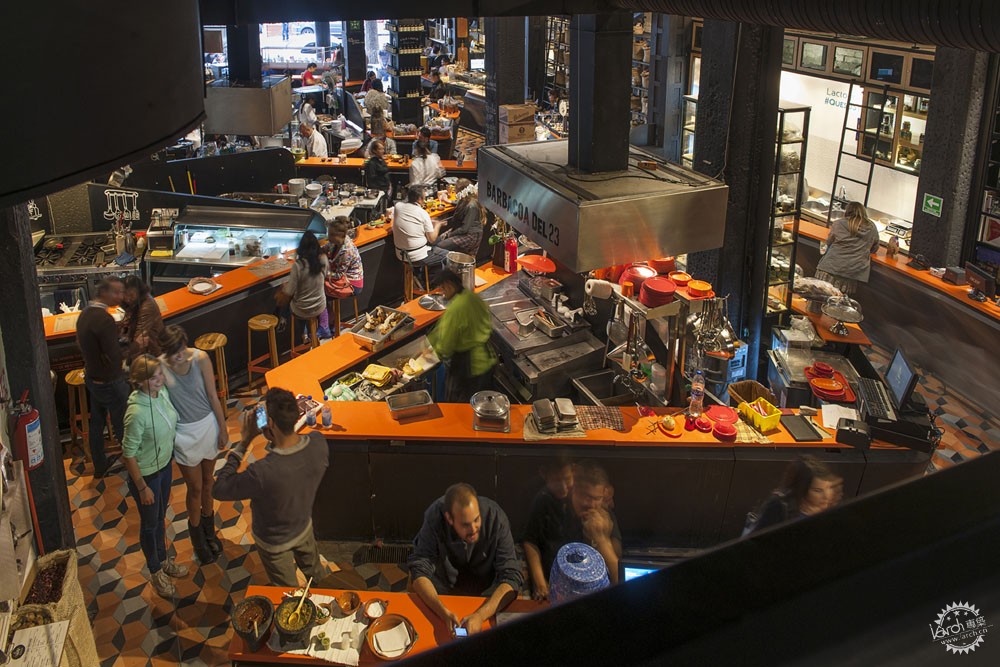
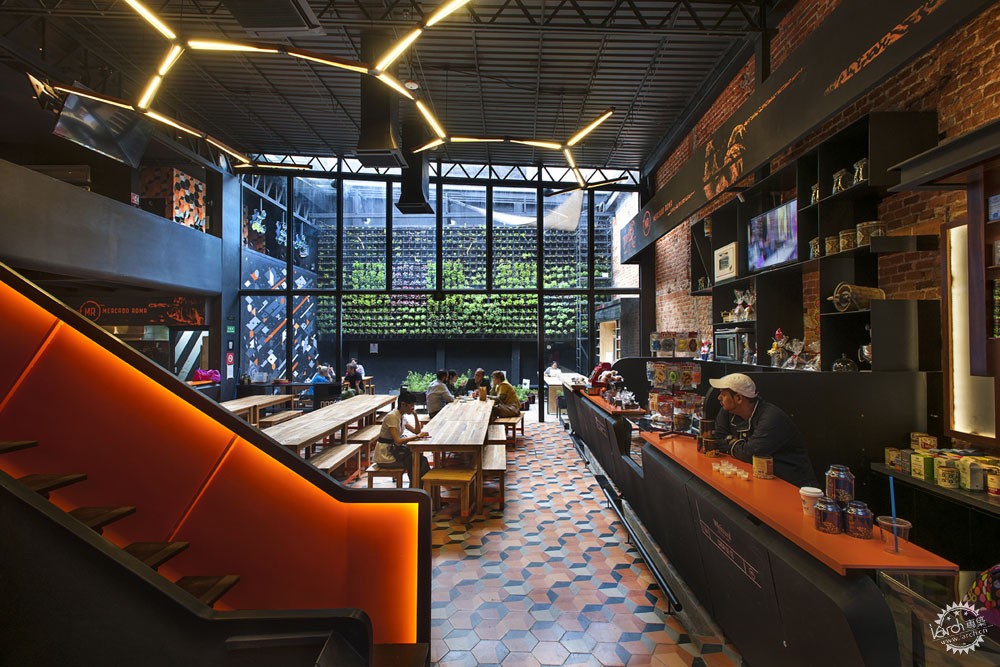
墨西哥Mercado Roma美食城|Mercado Roma / Rojkind Arquitectos . Image © Jaime Navarro
VB:让客户了解多样性,你会更加有价值。
MR:是的,因为我的客户可以有其他的选择,但是如果我能够为他带来好想法,他就会选择我。
VB:这很有趣,因为你能够改变自己的角色。对你而言,设计建筑完全不够。那么,作为一名当代建筑师,你又是怎么自我定位的呢?
MR:我的职责就是把各个方面联系在一起。如果我说,我是一名建筑师,我只想要设计建筑,那么这只会形成边界感。作为建筑师,我们必须学会融合,必须学会合作,这叫做共同的责任。我们需要将各方利益相关者集合在一起。当前的社会,在正式与非正式之间存在着一定程度上的脱节。墨西哥依靠信息化而繁荣,这座城市很漂亮,随处可见随意的市场与商店。这里有着难以置信的活力,我们也知道许多政治制度并不起作用,因此我们只能提高自己的能力,找到潜在的发展可能。举例来说,有客户希望我们能够设计一座超市,那么我会建议客户通过非正式的停车场来替代原有停车区域,因为这样人们就能够看到所销售的商品。另外,一些流行商品也可以放在商店里。这就是当地社区之间的联系。通常来说,这些策略大过于建筑设计。不是说我不相信建筑的能力,是我相信它拥有更大的能力。
“作为建筑师,我们必须学会融合,必须学会合作,这叫做共同的责任。我们需要将各方利益相关者集合在一起。”
VB: Bringing these diversities you become more valuable to your clients.
MR: Precisely, because my clients can always hire another architect but if I am his advisor and thinker, and strategist, he wants me there. I am there to provoke his thinking.
VB: This is quite interesting how you flipped your role as an architect. For you designing a building is not enough. How would you then define your role as a contemporary architect?
MR: My role is to find, connect, and interconnect loose ends. If I say – I am an architect, all I want to do is to create a building. That only creates boundaries. As architects, we must blend in and dissolve; we must find ways to work with others. I call it co-responsibility. We need to find and bring together all potential stakeholders. There is a disconnect between formalities and informalities. Mexico thrives on informalities. It is beautiful – you see pop up informal markets and stores everywhere. We have this incredible vibrancy because we know that politically our system does not work so people constantly need to improvise and be very resilient to be adaptive to the circumstances and the city. So, when I have formal clients who just want to do a project I always try to provide a link to a potential informality. For example, when we were hired to redesign a local supermarket I proposed to the client to set up an informal market on weekends in place of their parking lot and see what kind of products people would sell there. Then the most popular vendors could be invited to the store and that’s how a strong link with the community can be established. Often these design strategies are more powerful than the physical appearance of a particular building. It is not that I don’t believe in the power of architecture on its own, but it could be so much more.
“As architects, we must blend in and dissolve; we must find ways to work with others. I call it co-responsibility. We need to find and bring together all potential stakeholders.”
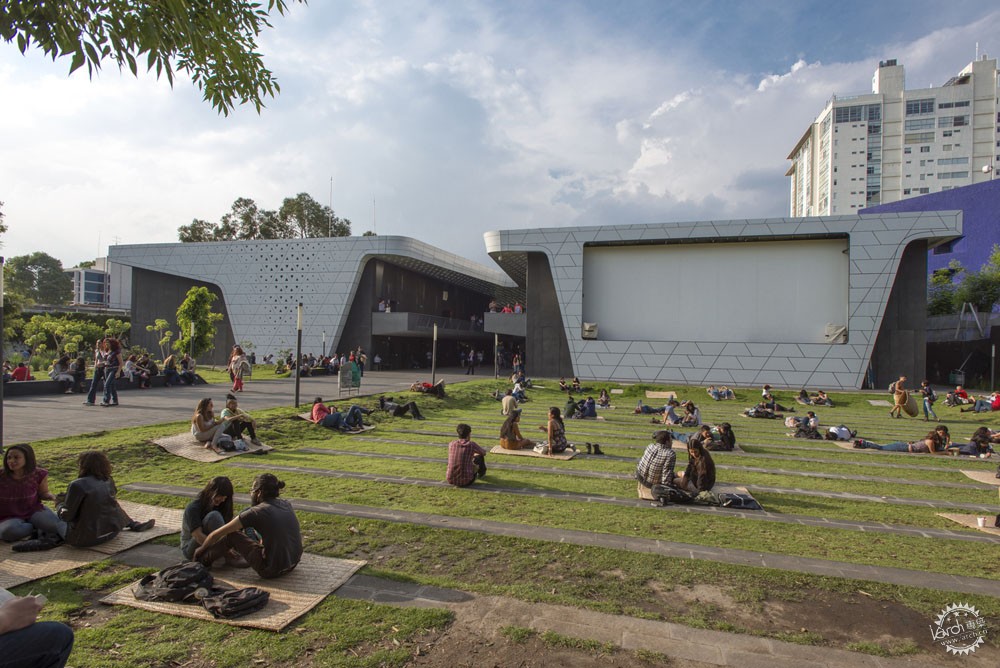
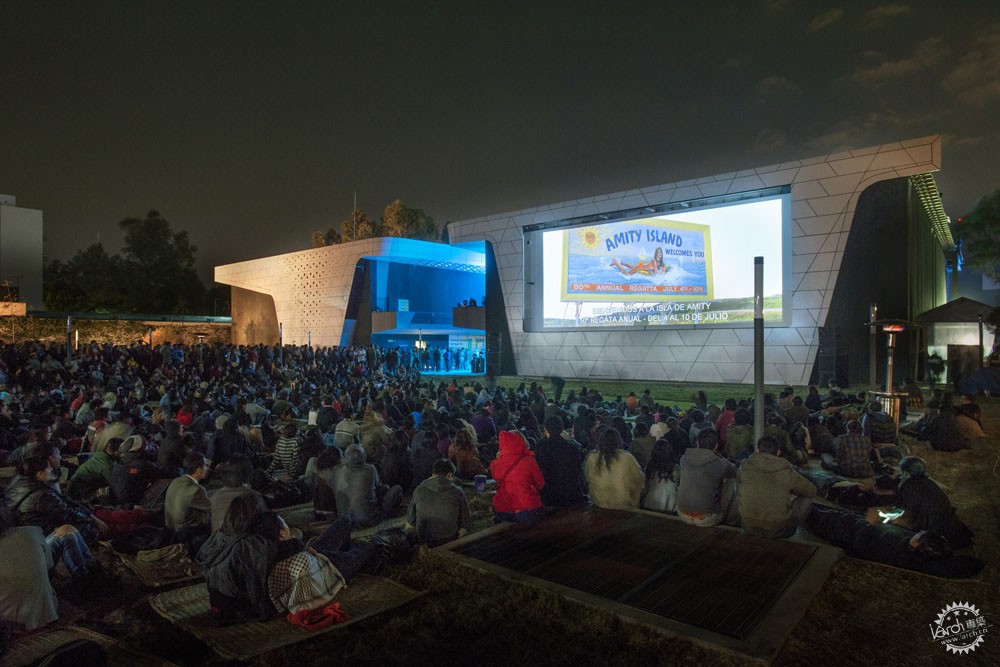
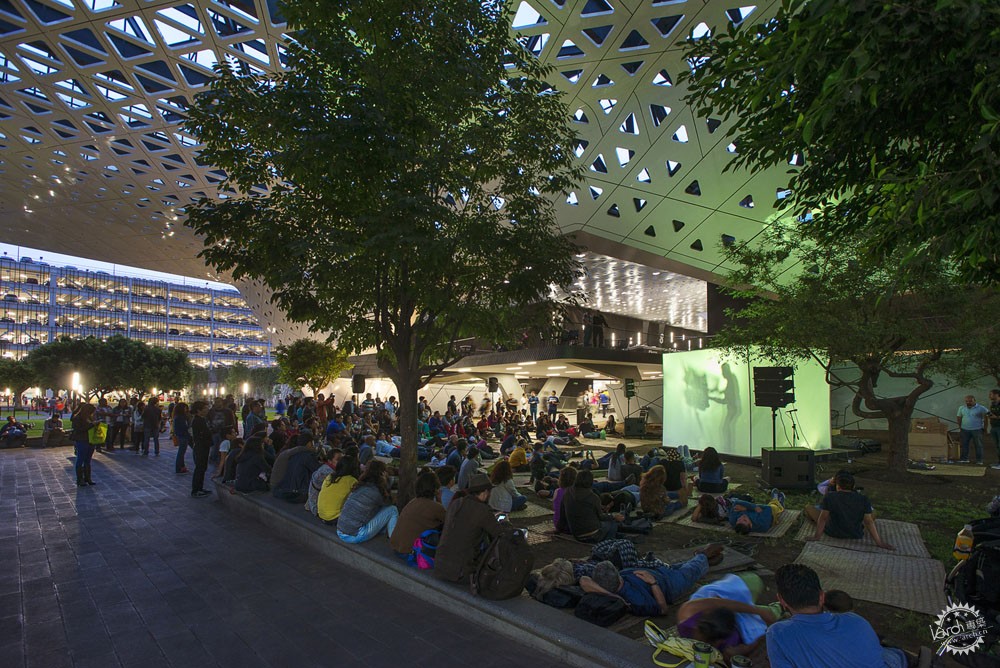

墨西哥Cineteca Nacional电影院|Cineteca Nacional / Rojkind Arquitectos . Image © Jaime Navarro
VB:你觉得你应该激活建筑,而不只是设计建筑。
MR:我很喜欢“激活”这个词。你知道,我们经常受邀作为顾问,为项目制定设计方案。一旦方案确定,客户就可以为这个项目雇佣其他建筑师。
VB:你最开始是做音乐的。你认为建筑和音乐之间有有形的联系吗?
MR:当然有了。建筑和音乐都有着诸如节奏与韵律等共同点。对我来说,重点是其他方面。我认为所有的学科之间都存在有联系,关键在于不同的学科能够帮助激发你的思维,因此你不会只从建筑的角度来看待事物。你还能够以建筑师、音乐家、市民、父亲、朋友等身份来看待事物,这些反而能够帮助你成为一名好建筑师。
VB:你为什么会认为这样的想法能够让建筑更好?
MR:因为你能够更放得开,而不只是单纯地看到建筑师所关注的信息。这也是许多建筑师所经历的东西,他们的作品变得很优秀,因为他们自身亲历过这些东西。我喜欢和非建筑师讨论工作,我想要知道他们的反馈,因为这能够解决更多问题,这非常重要,因为他们的回答常常不只是处于建筑专业,而是他们自身的经验。音乐和建筑之间的区别在于合作,如果一位音乐家听到另一位音乐家的演奏作品,他们之间就会产生一种吸引力。而建筑师却不喜欢如此,每位建筑师都在进行独自创作,这很无趣。但是这种状况也正在改变,建筑应该开放交流。我喜欢的环境是,店主、厨师、街头商人、开发商们能够互相沟通。这会产生更加人性化与强大的社会。
“这也是许多建筑师所经历的东西,他们的作品变得很优秀,因为他们自身亲历过这些东西。我喜欢和非建筑师讨论工作,我想要知道他们的反馈。”
VB: You feel you need to activate architecture, not just to make a building.
MR: Activate is the right word. I like that. And you know, because of our experience, sometimes we are invited to contribute as consultants by developing various design strategies. Once these strategies are defined, clients may choose to hire other architects for the project.
VB: You came into architecture from music. Do you think there is a tangible connection between music and architecture?
MR: Of course. It is true that both music and architecture have such common qualities as rhythm and repetition. But to me, the essence is somewhere else. I see all disciplines as boundless and interconnected. The point is that different arts and disciplines help your mind to expand, so you don’t see things only as an architect. You must see things as an architect, musician, citizen, father, friend, and so on. All these things will make you a better architect
VB: Why do you think this idea of being so prepared would make architecture better?
MR: Because you would be more open and not blinded by seeing things only the way architects see things. This is what happens to so many architects – they become so good at their work, they don’t see the world through other peoples’ eyes. I love discussing my work with people who are not architects. I need to hear their feedback. It will address more issues. It is important because the response of such people is not about architecture but about their experience, and isn’t it the experience that architecture is all about? The difference between music and architecture that I discovered was on the collaborative front. If a musician hears another musician playing music there is a natural draw to play music together. Architects don’t usually like to work together. Every architect is playing solo; that’s boring. It is changing, however. I try to change this around. Architecture should be an open source. I like to create environments where the voice of an architect is as important as the voice of a storeowner, chef, street vendor, or developer. That would produce more humane and robust places.
“This is what happens to so many architects – they become so good at their work, they don’t see the world through other peoples’ eyes. I love discussing my work with people who are not architects. I need to hear their feedback.”

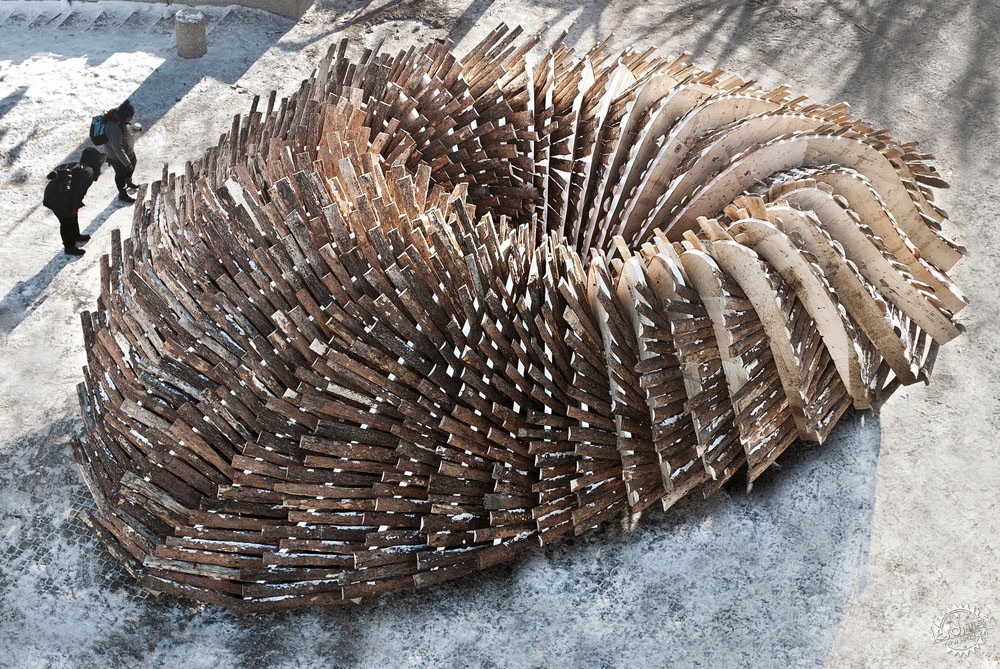

The Hybrid Hut / Rojkind Arquitectos . Image © Jaime Navarro
VB:你工作关于什么?主要目的是什么?
MR:建筑师将客户的真实需求转化为具有功能的空间形式,但对我而言,这远远不够。在学校的时候,我们都是在解决问题,但我想要的更多,我希望能够实现空间的连续性。举例来说,在Cineteca National项目中,开幕时,当时的人数多出了预计的3倍,那这么多人怎么办?人们喜欢这个空间,就会愿意在这里呆着。因此,作为建筑师,我们不应该完全考虑设计,我们应该为可能的事情留出空间。但是我们也没办法考虑到全部的可能,社会的进步非常快。我们要做的是让人们能够从这个空间中获得学习的可能,并且在下一个项目中应用到这些经验。
VB:那作为一名建筑师,你总是想超额工作。这是不是意味着,即使你了解到项目的具体内容,你也会加上自己的东西呢?那这些东西一般是什么?和既定的内容相比有什么不同?
MR:慷慨吧。想象一下,如果所有的客户都能够慷慨地为社区建造新公园、新道路那该有多好。没有政府的投入,我们只能找到其他方法来提升公共空间。建筑师需要做到一些政府没有做到的职责。因此不要提标志性建筑,我不喜欢这个说法。我只希望建筑能够具有标志性意义,让社区更好地联系起来。建筑重要在于它能做什么,而不是看起来像什么。
VB: What would you say your work is about? What are the main intentions?
MR: Architecture is about translating certain needs of the client into a form that brings all these functions to life. But for me that’s not enough; architects are trained for that. We did that at school – we solved problems. I want more. I want to activate and interconnect spaces. For example, when we opened Cineteca National its attendance tripled and there are so many people who go there now for many more reasons than just going to the movies. People like the space and want to spend time there. Also, we, as architects, should not worry about designing everything 100%. We need to leave space for things to happen and let people take over. We can’t plan for everything. Societies change quicker than we think. What we can do is to let people use our spaces and learn from that to use that knowledge in our next project.
VB: As an architect, you always try to go beyond the scope. Doesn’t this mean that even before you know what the project will be about, you have your own agenda? What is it? What is there in you that goes beyond any given program?
MR: Generosity. Imagine if all clients were more generous to our communities by building new parks, providing wider sidewalks, and so on. We don’t have a good government, so we must find other means to improve our public spaces. Architects need to pick up where governments fail. Forget iconic architecture; I hate that. I only wish architecture would become iconic as meaningful places that make good social connections to local communities. Architecture should be about what it can do, not what it can look like.
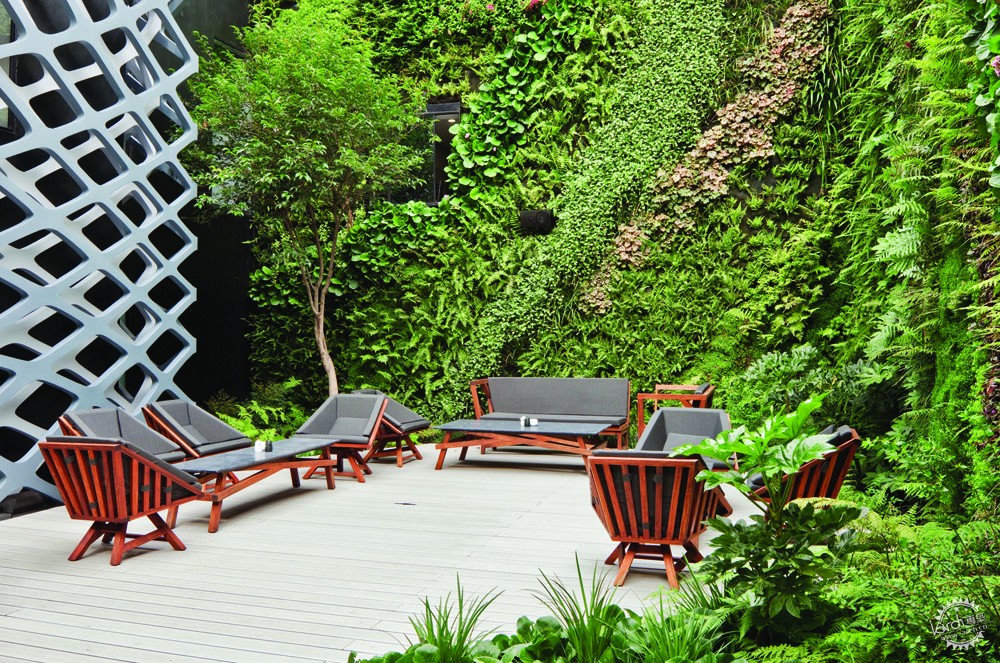


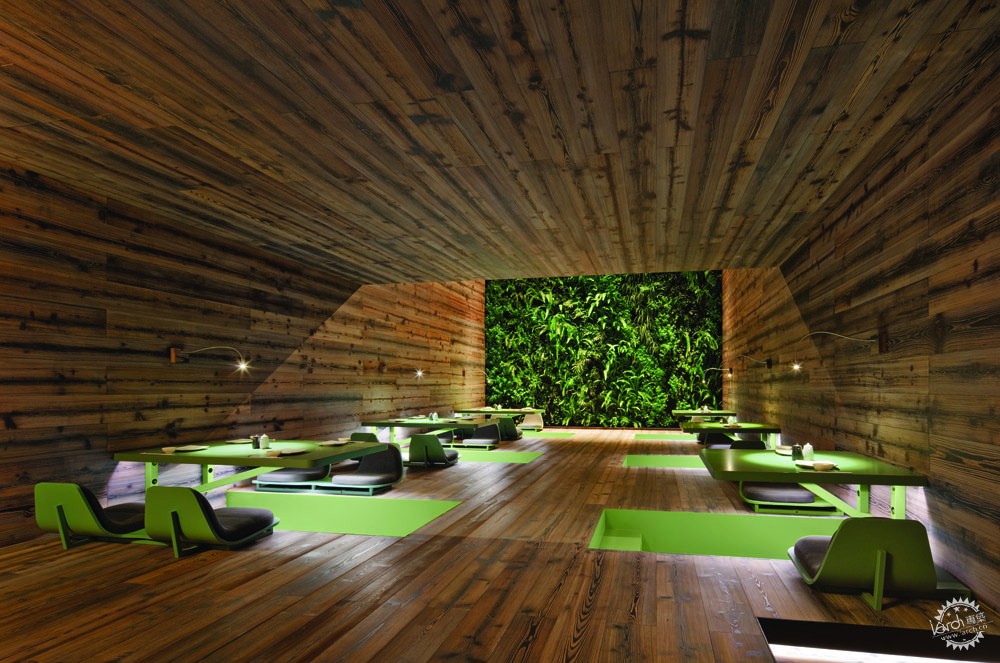
墨西哥tori-tori餐厅|Tori Tori Restaurant / Rojkind Arquitectos . Image © Paul Rivera



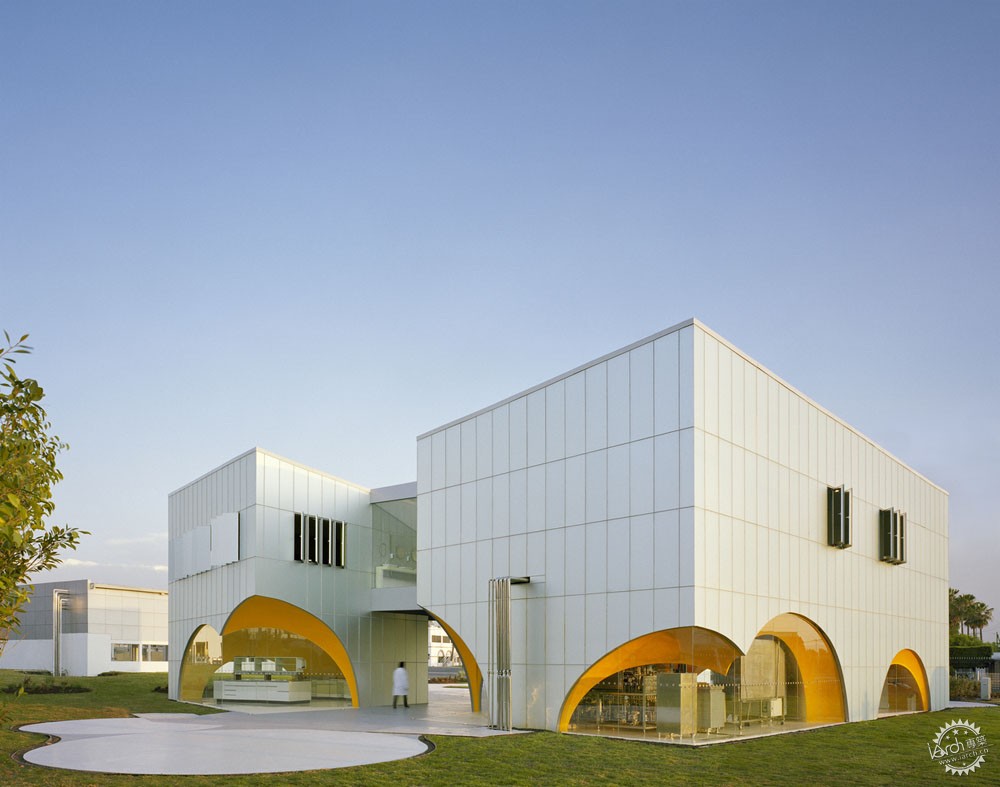
Nestle Application Group / Rojkind Arquitectos . Image © Paul Rivera


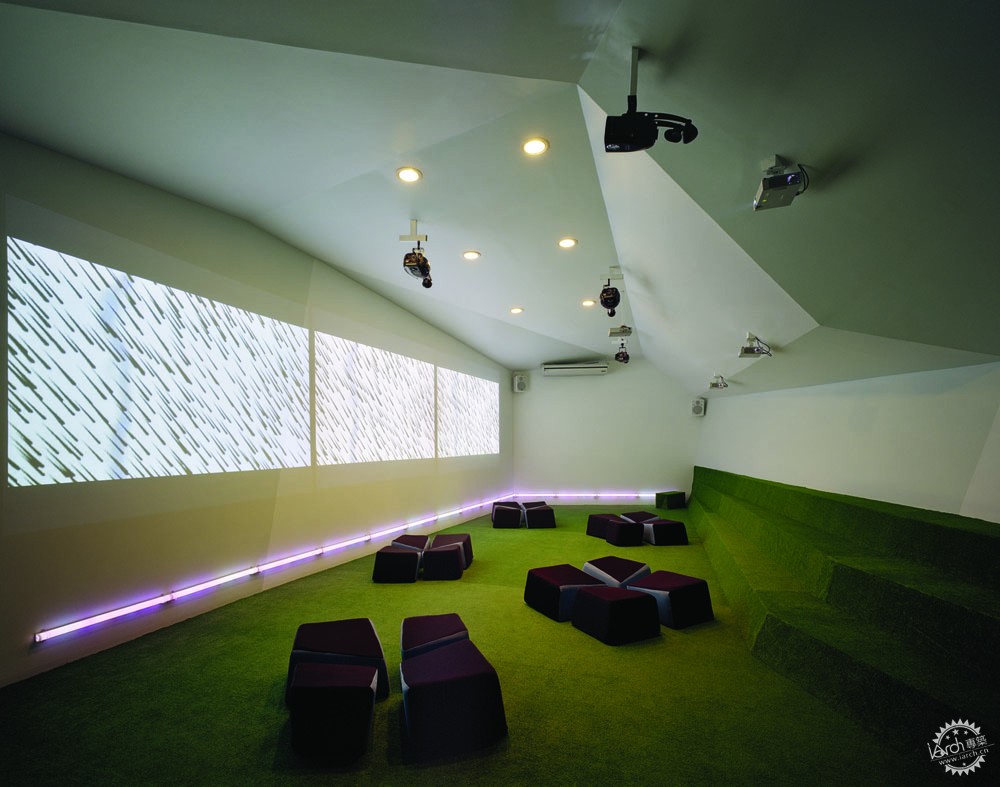
巴西雀巢巧克力博物馆|Nestle Chocolate Museum / Rojkind Arquitectos . Image © Paul Rivera
作者简介:
VLADIMIR BELOGOLOVSKY是纽约非营利Curatorial项目的创始者,他在纽约库伯联盟学院学习建筑,并且著有9本著作,其中包括、《纽约:建筑指南》(2019年)、《名人时代的建筑师对话》(DOM, 2015)、《Harry Seidler: LIFEWORK 》(Rizzoli, 2014)、《苏维埃现代主义:1955-1985》(TATLIN, 2010)。另外还有许多大型展览,即2012年的世界巡回展览“Harry Seidle:绘画建筑”,2017至2018年的“Emilio Ambasz”、2016年起的“Sergei Tchoban”,还有2008年威尼斯建筑双年展俄罗斯展馆的“象棋游戏”。 Belogolovsky还是柏林建筑杂志“SPEECH”的美国记者,在2018年,他是北京清华大学的受邀学者,并且曾经在超过30个国家的高校和博物馆进行演讲。
Belogolovsky的专栏“理念城市”为ArchDaily的读者介绍了他也世界知名建筑师的对话,自2002年起,他采访过超过300位建筑师,而这些密切会谈也是2016年6月悉尼大学展览的主题内容,“理念城市”将会在世界各地举办巡回展览,从而不断地探索设计与理念。
VLADIMIR BELOGOLOVSKY is the founder of the New York-based non-profit Curatorial Project. Trained as an architect at Cooper Union in New York, he has written nine books, including New York: Architectural Guide (DOM, 2019), Conversations with Architects in the Age of Celebrity (DOM, 2015), Harry Seidler: LIFEWORK (Rizzoli, 2014), and Soviet Modernism: 1955-1985 (TATLIN, 2010). Among his numerous exhibitions: world tours of the work of Harry Seidler (since 2012), Emilio Ambasz (2017-18), Sergei Tchoban (since 2016), Colombia: Transformed (American Tour, 2013-15), and Chess Game for Russian Pavilion at the 11th Venice Architecture Biennale (2008). Belogolovsky is the American correspondent for Berlin-based architectural journal SPEECH. In 2018, he was a visiting scholar at Tsinghua University in Beijing. He has lectured at universities and museums in more than 30 countries.
Belogolovsky’s column, City of Ideas, introduces ArchDaily’s readers to his latest conversations with the most innovative international architects. Since 2002, he interviewed over 300 architects. These intimate conversations are featured in the curator’s ongoing site-specific installations made up of voice recordings and thought-provoking quotes.
|
|
